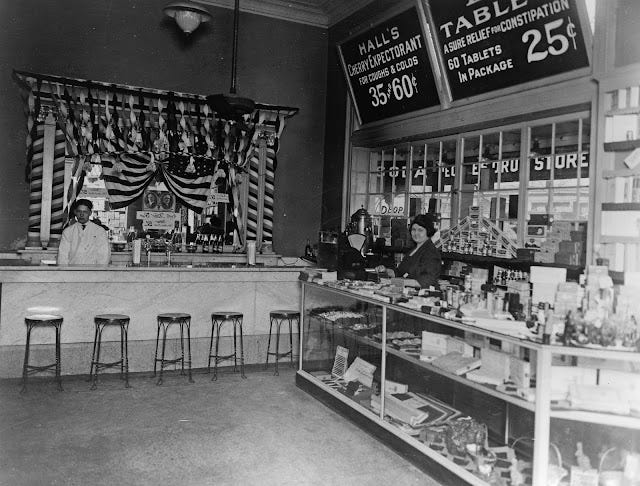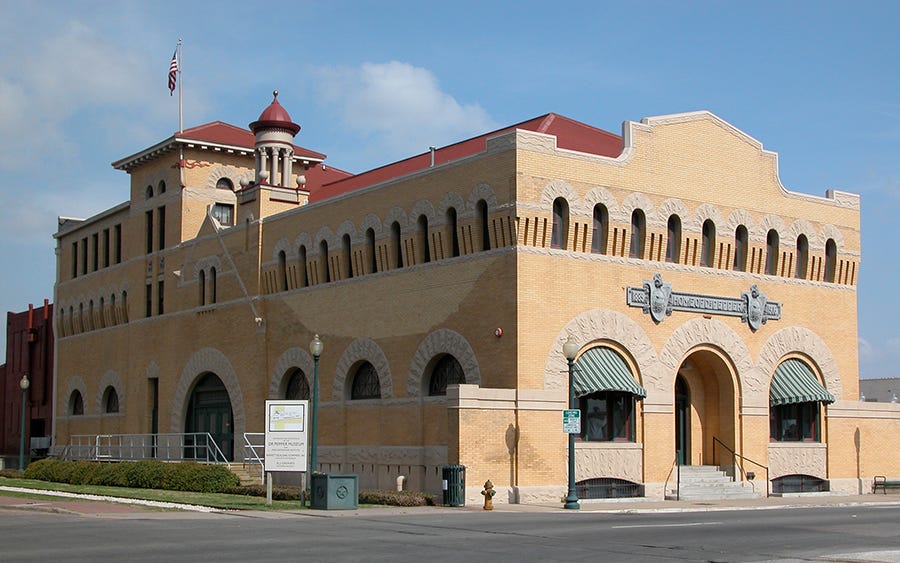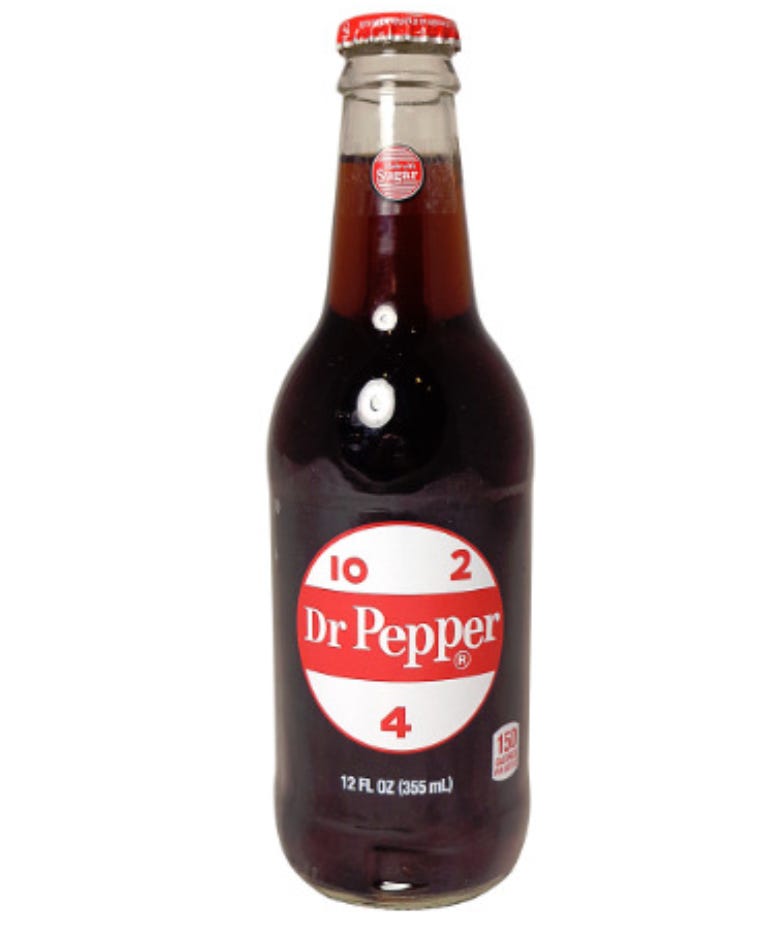My local deli has dozens of sodas for sale. You’ve got the mainstream classics: Coca-Cola, Diet Coke (these are two distinct beverages), Sprite, Ginger Ale, Sunkist, Mountain Dew, Pepsi, Fanta etc. Then you’ve got the new kids on the block, appealing to the more health conscious consumer who wants low sugar, organic ingredients and apparently prebiotics (for a happy, healthy you). And then there is Dr Pepper, a soda I find difficult to pin down.
A few weeks ago my boyfriend and I were grabbing a quick slice of pizza, when to my shock and horror, he ordered a Dr Pepper with his slice (who am I living with?) I can’t even remember the last time I tasted this soda, so I had a sip. It tasted like an indecipherable mish mash of sugary chemicals. Having not given this beverage much thought (ever) my food historian brain immediately assumed it is some recent Frankenstein creation that has crawled out from the depths of the American processed food industrial complex. But, as I recently learned, Dr Pepper is actually the oldest major soft drink in America.
Which means her mysterious taste has a bit of a story to it.
The Dr Pepper story begins in Waco, Texas back in 1885 at a little country drug store, called Morrison’s Old Country Drug Store. Here a young pharmacist named Charles Alderton mixed up a bunch of different ingredients to create the recipe that would become Dr Pepper (the period after “Dr” was dropped in the 1950s). Alderton, like pharmacists across the country at the time, would regularly devise concoctions for his customer’s ailments using different extracts, drugs, botanicals and flavors mixed with soda water. Stomach problems? Migraines? Pain in your knees? Go to the pharmacy and have your pharmacist whip up a fountain drink to fix that.

In this sense pharmacists had license to operate somewhere in between an actual doctor and a Truth Calkins type figure (Truth was the original Erewhon elixir blending wizard who made custom healing beverages for customers in the 2000s). Alderton’s unique blend of fruits, botanicals and sweeteners was a hit, and the owner of Morrison’s, Wade Morrison, started selling the beverage as part of their soda fountain repertoire. The name for the drink, Dr Pepper, has a number of origin stories – though the Dr Pepper corporate website will tell you that Morrison named it after Dr. Charles Pepper, a Virginia doctor and the father of a girl he was once in love with.
In 1891 Morrison decided to take Dr Pepper to the next level. With the help of beverage chemist Robert S. Lazeby, the two founded Artesian Mfg. & Bottling Company, which would later become the Dr Pepper Company and began to produce bottled Dr Pepper. The drink remained a beverage largely consumed in Texas, until the 1904 World’s Fair in St. Louis, Missouri, which introduced the soda to a much wider audience.
By 1923, Morrison seems to have left the picture and Lazenby moved the company from Waco to Dallas. Isn’t it interesting that it rarely seems to be the person who actually came up with the idea who gets all the money? (Though perhaps today, some folks like the Winklevoss twins are happy not to be at the helm of the social media company that helped destroy American democracy).
To help peddle Dr Pepper far and wide, marketing campaigns referred to it as “The King of Beverages” and it was touted to cure all kinds of ailments, from indigestion to tonsillitis. In 1968 the company produced a commercial featuring Dick Clark drinking Dr Pepper in hot – and cold weather. Clark instructs viewers to heat up some Dr Pepper in a saucepan and pour it over a thin slice of lemon for, “a perfect winter treat.”

At some point in the early 20th century, scientists conducted a study that found workers have slumps around 10am, 2pm and 4pm (did we really need a scientific study to prove this?) And since sugar provides a nice hit of energy, Dr Pepper employed the laborer’s energetic lows in a new marketing campaign, resulting in the slogan, “Drink a bite to eat at 10, 2, and 4!” (I guess it was supposed to caffeinate and fill you up). On vintage bottles you can still find the numbers 10, 2 and 4 encircling the Dr Pepper logo, like the hours of a clock.
So what exactly are the 23 flavors in Dr Pepper? The ingredient list on the back of the bottle today lists high fructose corn syrup, artificial flavors, caramel color, phosphoric acid, sodium benzoate and carbonated water. Much like the recipe for Coca-Cola, the 23 flavors in Dr Pepper are a closely guarded secret (according to legend the recipe exists in two parts, each held in a separate safe). But over the years avid consumers have compiled a list that is probably relatively accurate. Supposedly, the 23 flavors of Dr Pepper are: amaretto, almond, blackberry, black licorice, carrot, clove, cherry, caramel, cola, ginger, juniper, lemon, molasses, nutmeg, orange, prune, plum, pepper, root beer, rum, raspberry, tomato and vanilla.
Yesterday around 2pm I hit my afternoon slump. Dr Pepper on the mind, I decided to fully submit to the company’s 20th century marketing ploys and go buy a Dr Pepper. As I opened the plastic bottle (I tried to find a can, because soda tastes better in a can, though obviously superior in a glass bottle) I let the carbonation fizzle out. I took a sip and came back to my original conclusion that it's just a really weird soda. At first you get the sense you are drinking some kind of cola, but then the vanilla and the cherry and amaretto hits your palate and you know this is not Coke. Notes of spices like clove and nutmeg, mingle with a cloying sweetness that does not feel as though it ever originated somewhere natural.
Dr Pepper is a flavor unique unto itself. And it’s hard to describe if you’ve never tasted it before. The FDA has ruled that it is not a cola, nor is it a root beer, but that it is actually in a class of its own – a pepper soda. I had never heard of pepper sodas until I began researching this piece.

My research also led me to learn about the Dr Pepper Museum. Yes, there is a Dr Pepper museum in Waco, Texas in the old Artesian Manufacturing & Bottling building. To be fair the museum isn’t just about Dr Pepper, it also appears to be an institute dedicated to the history of soft drinks in America (Lord knows we consume enough soda for there to be a museum dedicated to it).
I was browsing the museum tour options, when I stumbled upon something rather strange. The Dr Pepper museum offers a “Paranormal Tour.” Apparently museum staff regularly encounter shadowy figures, ghosts, voices, and “overwhelming emotions” – which you too can experience on this nighttime tour of an old bottling plant in Waco, Texas.
Dr Pepper is a mysterious beverage indeed.
Edible History is a reader supported newsletter. To support my work and to gain access to the full archive of posts (each month paid subscribers receive additional edible histories in their inbox) consider upgrading to become a paid subscriber. It’s just $5 a month.








Thanks for the history of my favorite soda...I'm a Pepper!